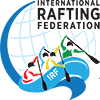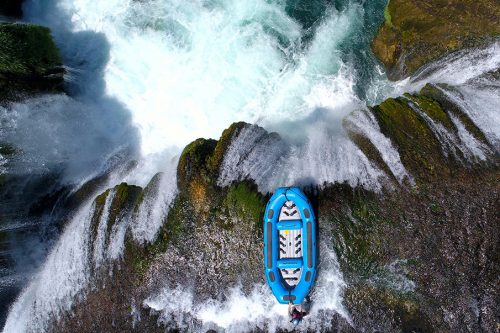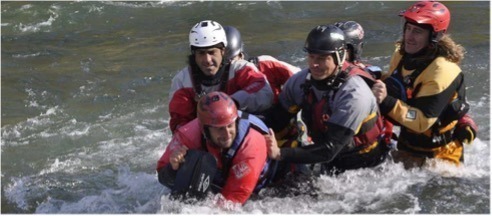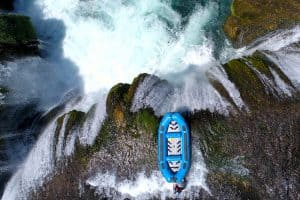 As parts of the world start easing COVID-19 stay-at-home orders and other restrictions the big question in rafting operators’ minds is – how to start getting back onto the river and running trips safely? Properly managed outdoor activities are among the safest activities to engage in as the outdoor environment presents fewer opportunities for the virus to spread when compared to indoor activities. Rafting trips can be one of the more challenging adventure activities to manage during this pandemic.
As parts of the world start easing COVID-19 stay-at-home orders and other restrictions the big question in rafting operators’ minds is – how to start getting back onto the river and running trips safely? Properly managed outdoor activities are among the safest activities to engage in as the outdoor environment presents fewer opportunities for the virus to spread when compared to indoor activities. Rafting trips can be one of the more challenging adventure activities to manage during this pandemic.
The IRF has solicited ideas and advice from our Guide Training and Education (GTE) Committee and various rafting tour companies around the world to help raft tour operators, and even recreational rafters and racers, to negotiate this first descent towards the ‘new normal’ of running river trips. If you have solutions to any of the problems that rafting operators are facing in getting people back on the water please do let us know. You may download a PDF version of this article in ENGLISH and in SPANISH for printing and sharing. (Will be updated when needed. These versions are 20200528.)
- Get familiar with the RIGHT information:
- Keep up to date on the latest information from trusted sources, such as the World Health Organisation (WHO) and your local and national health authorities.
- To protect yourself and others from infection, we recommend that operators follow WHO guidelines and recommendations, even if they are stricter than your local requirements. Recommended reading: Getting your workplace ready during COVID-19 (very worth the read) and Protecting yourself and others from the spread of COVID-19 (essential).
- In addition to following WHO guidelines, it is also essential to follow your local legal restrictions that govern activities of this nature (which any operator, guide and trip leader must familiarise themselves with before offering a trip).
- Preparation for the ‘new normal’
- Develop a clear plan to address the typical risks associated with rafting and the heightened risk created by the Covid-19 pandemic. Know what to do if someone becomes ill with suspected COVID-19 at any stage of the trip.
- Minimize opportunities for transmission by instituting sign-up and check-in procedures that do not require physical contact.
- Check with your liability insurance providers for any changes to liability insurance policies as a result of operating during the COVID-19 pandemic.
- Create or edit your liability release waivers to include any social distancing guidelines that should be highlighted to the participants prior to the commencement of a trip.
- Have a plan for postponing or canceling your trips if conditions, such as local infection rates or local guidelines change.
- Consider the financial implications to you and your participants if your government or local authorities suddenly or unexpectedly implement more restrictive measures.
- Provide participants with clear information regarding deposits and refunds which explains what will happen if a participant is unable to begin or to complete a trip due to illness or a change in local requirements.
- Determine how you will communicate schedule changes to your participants and ensure that you have accurate contact information for each participant.
- Four of the most important things you must continually remind participants and staff to do:
- Maintain recommended physical distancing – WHO recommends that people should maintain a minimum distance of 1 meter from other persons. Some authorities recommend 1,5 meters or 2 meters. Do what is required in the region you are running your trip. Why? When someone coughs, sneezes, or speaks they spray small liquid droplets or aerosols from their nose or mouth which may contain virus. If you are too close to an infected person, you can breathe in the droplets. Recognize that some activities and actions, such as pulling swimmers onboard, rescues, and running more difficult rivers will require or involve close contact and could possibly place participants at higher risk of exposure.
- Regularly and thoroughly clean hands with soap and water (at least 20 seconds) or an alcohol-based hand sanitizer with greater than 60% ethanol or 70% isopropanol alcohol. Ensure soap and water or hand sanitizer are easily available at all times. Why? Hands touch many surfaces and can pick up and transfer viruses.
- Avoid touching eyes, nose and mouth. Why? Contaminated hands can transfer the virus to your eyes, nose or mouth where it can enter your body and infect you.
- Practice good respiratory hygiene. This means they must cover their mouth and nose with their bent elbow when they cough or sneeze. Why? Droplets and aerosols from coughing and sneezing are known to be the most common way that respiratory viruses are transmitted. By following good respiratory hygiene, you protect the people around you from viruses such as cold, flu and COVID-19.
- An additional suggestion is to encourage everyone to breathe through their noses instead of their mouths as much as possible. Why? Fewer droplets are released through nose-breathing and are not expelled as far.
Here are some ideas and pointers to help you prevent the spread of infection during a rafting trip:
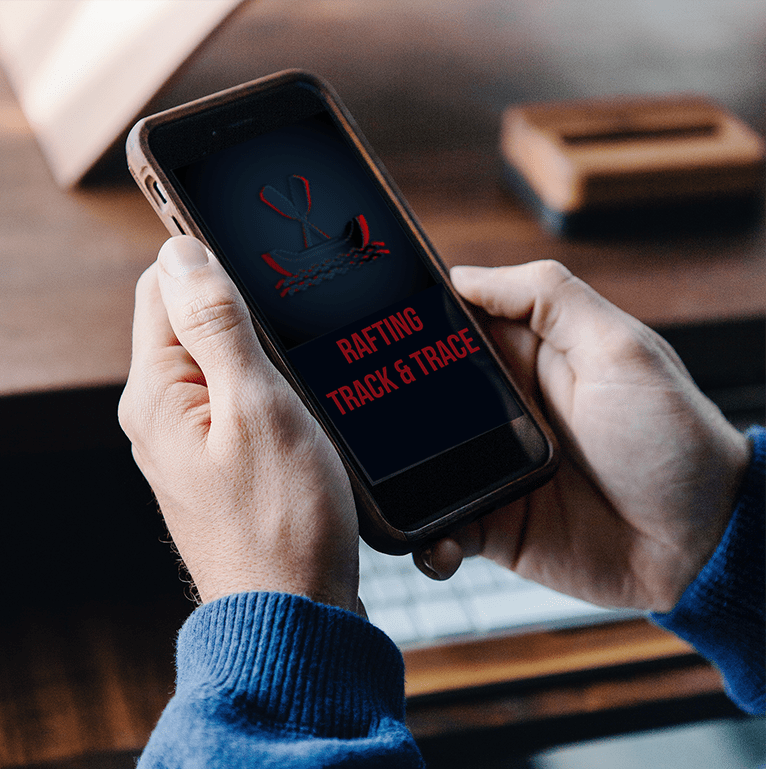 Pre-trip:
Pre-trip:
- Warn and inform all participants that protection against exposure to Covid-19 cannot be guaranteed.
- Perform a health screen of all participants. Question all staff daily, and all participants when they arrive to join the trip so that you are reasonably confident that they have no COVID-19 symptoms such as dry cough, headache or fever, and that they have not been in close contact with a COVID-19 positive person within the last 14 days. We recommend that you obtain a signed statement (liability release) from participants that specifically states this.
- Take the temperatures of staff members each day, as well as the temperatures of arriving passengers. Infrared thermometers should be used for this to avoid contact. Temperature readings will not reveal those persons with COVID-19 that are asymptomatic, but will help detect persons who are possibly infected.
- If the health screen indicates that a staff member or passenger seems at an increased risk for Covid-19 infection, they should not participate in the trip, but be directed to contact their local health department or healthcare provider for further care and direction.
- Keep a register of the details of all the participants on the trip in order to assist investigations should a COVID-19 outbreak be traced back to the trip. For passengers, it is best to collect this online when they make their booking:
-
-
- Full name
- Residential address
- Date of birth
- Email address
- Telephone number
-
- Keep trip participant numbers as low as reasonably possible. Why? Fewer people massed together will lower the odds that one of them may be infected, fewer will be placed at risk of becoming infected, and physical distancing and preventive hygienic measures will be easier to maintain and manage.
- To minimise the risk of virus transmission, sanitise all surfaces that may be touched or shared by passengers and staff. Why? Although the latest evidence suggests that the virus is not spread easily by surface contact, testing has shown that it can remain viable for hours and days on some surfaces – particularly on hard surfaces like metal and plastic. Best practices dictate that surfaces should be sanitised as well as possible to avoid transmission. Suggestions include (but are not limited to):
- Sanitise all shared equipment after each use. To avoid transmission through shared equipment, guides should use their own river gear (as can passengers if is suitable and safe for the trip). All river gear must be suitable and compliant with any local regulations.
- Sanitise toilet areas thoroughly, as well as any changing rooms.
- Sanitise any vehicles that are used by disinfecting the seat belts, door handles and any other areas that may be touched.
- It is advised to have participants provide their own food (if possible) as long as it can be suitably packed and stowed by the guide.
- Ziplocks bags should be provided to each individual for their personal items to avoid surface contact with other person’s items before they are packed and stowed.
- Participants should wear face coverings (masks) during all off-water activities. Why? Evidence suggests that masks may help prevent disease transmission by keeping virus laden droplets and aerosols from reaching uninfected individuals. Participants should bring their own face masks and they should be fitted and worn correctly to be effective – WHO advice on how to wear masks. Wearing masks while whitewater rafting is not advisable. Why? Evidence suggests that face coverings are not effective once wet, and they potentially will interfere with breathing during exertion or when a person is in the water. Helmets also may interfere with wearing a mask properly.
- Try to avoid using any enclosed or indoor spaces during the trip or activity. Why? Evidence suggests that prolonged exposure to infected individuals while in an enclosed area will increase the likelihood that you will inhale enough virus particles to become infected yourself. Outdoor environments tend to dilute the exposure due to the open space, wind and air currents. If you must use indoor spaces, we suggest that you open windows and doors to the outside air if possible.
- Trip participants that have already had close contact with each other can be managed together as a ‘safety pod’. A ‘safety pod’ could consist of people who live in the same household and people who know and trust each other to have been following proper social distancing and preventive hygiene. Why? It is not necessary to enforce physical distancing recommendations between participants who have already safely engaged in close contact before the trip. Participants that do not fit these criteria (or similar) should be insulated in their own ‘safety pod’. Each ‘pod’ should then be keep insulated from close contact with other ‘pods’.
- When conducting river safety talks, instructions, or demonstrations, or while engaging participants in any other conversation or discourse, select a location with plenty of open space and keep ‘pods’ well separated while encouraging everyone to maintain the recommended physical distancing.
- Where possible, instruct participants how to properly check equipment (such as the proper fit of PFDs) then have members of a ‘pod’ do a preliminary check of each other’s equipment while the guide watches. Afterwards, the guide can do a quick final check, sterilising their hands when moving in-between ‘pods’.
- Ensure that physical distancing requirements are maintained between ‘pods’ when loading or off-loading passengers into rafts and vehicles, or packing up or loading equipment.
- In rafts, spread participants out as widely as possible. This is likely to be the second hardest part to manage:
- Guides should distance themselves from passengers by sitting at the back of the raft and placing passengers further forward.
- Place passengers who are part of the same ‘safety pod’ together in the same raft.
- When it is necessary to put passengers from different ‘pods’ in the same raft, guides must ensure that the recommended physical distances between them are maintained. When possible, use larger rafts that provide more space. To achieve a 1 meter distance between passengers in a typical 6-person raft, it should have no more than 4 passengers. To maintain a 1.5 meter or 2 meter distance between passengers, a 6-person raft should have no more than 2 or 3 passengers.
- In Class 3 whitewater and above, passenger loads in rafts may need to be further adjusted so that ‘safety pods’ can maintain the recommended physical distancing. For example, if using the “get down” command will shorten the distance, or if ‘pods’ are likely to be thrown together when running rapids.
- Consider offering trips on less challenging rivers in order to reduce the chance of a passenger falling overboard or the need for rescue. If a participant falls overboard or a rescue becomes necessary, guides should make the close contact as brief as possible. The rescuer should try to hold their breath during any close contact.
- Safely transporting participants in vehicles – this is probably the hardest to accomplish as ‘safety pods’ may need to sit close together for a long period of time in a closed space:
- Have participants drive their own vehicle where possible.
- Provide hand sanitiser for everyone to use as they get into and out of vehicles.
- Passenger buses and vans should be loaded from the back seat forward, and exited from the front seat to the back.
- Masks should be worn at all times in shared vehicles.
- Maintain social distancing between ‘safety pods’ by using proper spacing and limiting the number of persons in the vehicle. Consider keeping empty seats and rows between passengers.
- Have windows open at all times to ensure plenty of fresh air circulation.
- If transportation is for a short distance, bikes are a possible option.
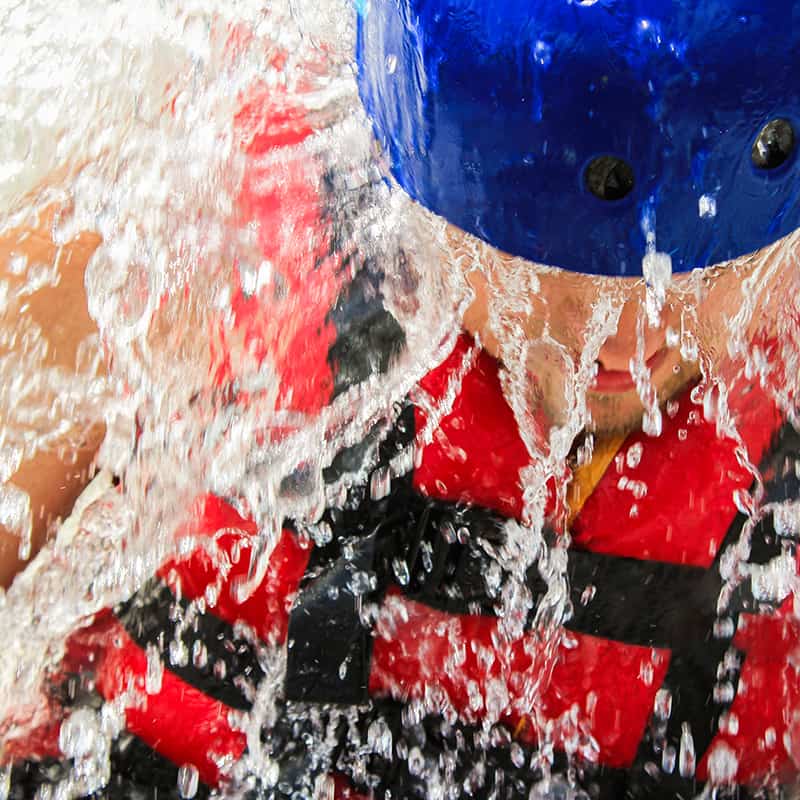 Getting your operation underway again:
Getting your operation underway again:
- Do test runs with in-house people.
- Start with Class 1 or maybe Class 2 depending on the type of river, and get familiar with what is and isn’t possible, and where improvements are needed.
- Focus on serving groups made up of family or friends who can safely co-mingle as a pod and not risk infection.
- Initially focus on running safe trips. Building the business back up will come in time.
- Sanitise equipment after each use, like lifejackets, helmets, wet suits and other gear. NRS says “For cleaning, soap and water has proven to be both basically safe for the product and effective in killing viruses due to the amphiphiles (fats) in the soap. No need to overspend—any inexpensive non-detergent soap can stop a virus (which is why hand washing is the number one way to stop the spread). The fats in soap dissolve the protein of the virus outer layer and destroy the bond it has with the host, rendering it harmless.” It is also a good confidence booster for participants to see you doing this.
- Be a good representative for rafting by protecting the environment and communities you visit. Because there is currently a heightened level of sensitivity and fear of COVID-19 contagion, rafters should consider the potential consequences of their decisions to visit communities and interact with persons outside of the trip during rafting-related activities. Access to rivers and corresponding infrastructure may be closed if the spread of the disease is shown to be caused by rafting activities. Be aware that the rural communities near popular river destinations might not have the infrastructure to manage high rates of infection.
Here’s a statement everyone could use as it sums it all up well –
“As the COVID-19 situation continues to evolve, we are ready to evolve with it and change our practices accordingly. But we want you to know that we are taking this situation very seriously and adjusting as necessary. The only thing we care about more than getting out on the river is making sure we are doing so safely for all involved.” – Tongariro River Rafting
Stay safe, and enjoy getting back on the river!
The social impact of the COVID-19 pandemic, is evolving quickly as health authorities continue to learn more about this new disease. Therefore, the IRF makes no representations and assumes no responsibility for the accuracy or completeness of this information. We insist that rafting operators should always seek the most current advice from your local authorities and public health officials if you have specific questions about when, and under what circumstances, you may resume operations or simply go rafting.
#StaySafe #EcoRafting #RaftersAreAwesome #AreYouReady #InternationalRafting #StrongerTogether #WeAreIrf
